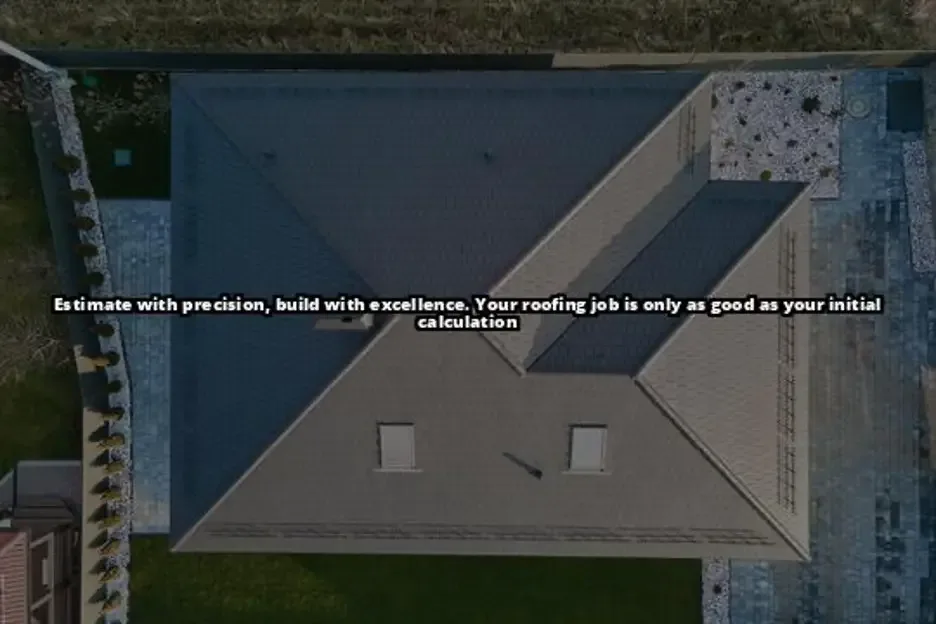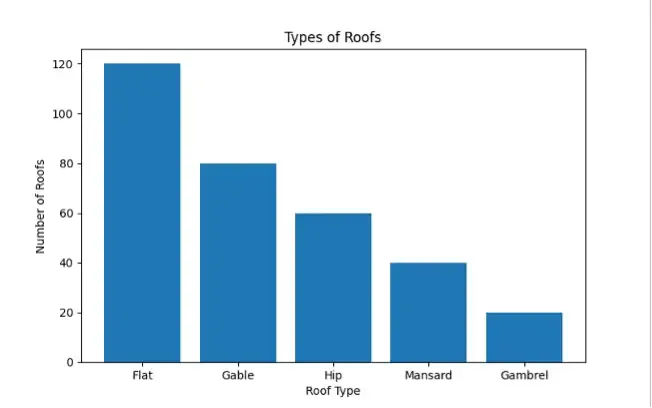
Are you looking to accurately estimate and budget for roofing jobs? Roofing estimation is a crucial aspect of any roof construction project, which, for the most part, should be left up to the professionals. However, since the overhead cost associated with roofing can sometimes go overboard, you must set aside a realistic budget.
Accurate estimation can help prevent financial losses due to overspending or underspending on materials and labor. In this article, we will provide tips on how to accurately estimate the cost of a roofing project, the key factors to consider, the essential steps to follow, and the common mistakes to avoid.
It is worth noting that this is often the same process professionals will follow to price a roofing job.

Importance of Accurate Roofing Estimation For Any Roofing Job
Accurate roofing estimation is crucial as it helps determine the budget for the project. Overspending can lead to a project being terminated due to lack of funds, while underspending can result in the use of low-quality materials, compromising the safety and quality of the project.
Like anything else, when you are willing to spend more money on roofing, you can often end up with a higher-quality roof built from high-quality materials. However, most professionals in the roofing business tend not to provide clients or homeowners with unbiased advice. Thus, it is up to you as a homeowner to do your research.

Key Factors to Consider When Calculating A Roofing Estimate for Accurate Project Budgeting
| Element | Description |
| Roof Type | The type of roof to be installed or replaced, such as metal, shingle, or tile. |
| Roof Size | The size of the roof in square footage, which will determine the amount of materials needed. |
| Roof Pitch | The angle of the roof, which will impact the difficulty of installation and the amount of labor required. |
| Roofing Material | The specific materials needed for the project, such as underlayment, flashing, and accessories. |
| Labor Costs | The cost of hiring workers, including wages, benefits, and insurance. |
| Waste | The amount of waste expected during the project, which will impact the amount of materials needed. |
| Overhead Costs | Additional costs such as equipment rentals, transportation, and permits. |
| Timeframe | The expected timeframe for completion of the project. |
Several factors need to be considered when estimating the cost of a roofing project accurately, including:
Roof Type
Different types of roofs require different materials and labor, which can significantly affect the project’s overall cost. For example, a metal roof may require different materials and labor than a shingle roof. In the roofing industry, this variable can play one of the most significant roles in determining how much the job will cost.
Roof Size
The larger the roof, the more materials and labor will be required, which will increase the project’s overall cost. Usually, larger homes will have larger roofs. However, roofing contractors make it a point to measure a roof before providing an estimate. As a homeowner, you would already know this based on figures from the previous roofing job, or you can measure the roof yourself.
Roof Pitch
A steeper roof requires more labor and materials than a shallower roof, which can increase the project’s overall cost. The pitch can also make working on a roof much more complicated or easier. This means roofing work on a steeper pitched roof can take longer; hence, you will be billed for the extra man hours. It is easier to estimate how many man-hours the job will take with experience. But it still gives you a fair idea of how much the roofing job will cost, especially if you have the estimate from the previous roofing job available.
Roofing Materials
The cost of roofing material(s) varies quite a bit. Not only based on the type of material you choose, but material costs also depend on other factors such as quality and, at times, if their prices were hiked. Then, there is also the fact that some may require additional materials or labor, which can increase the project’s overall cost. For example, a tile roof may require more labor and materials than an asphalt shingle roof.
Labor Costs
The labor cost can vary depending on the workforce’s location, experience, and availability. To calculate labor hours, you can call a few roofing companies to inquire about their labor costs. How much do they charge per hour?
Add Overhead Costs
Factor overhead costs such as equipment rentals, transportation, and permits to ensure accurate estimation. Overhead costs can add up quickly and significantly impact the overall project cost, but you can handle this. It is something that the contractor will work out. However, you need to have the budget; in this case, we suggest adding 10% to 20% to whatever the above figure amounts to.
Sometimes, pricing roofing jobs can be more tricky, especially if you need to be made aware of the extent of work or repair required. In that case, we suggest contacting a roofing contractor to examine the roof and provide you with an estimate.
Common Mistakes to Avoid in Roofing Estimation and Budgeting
To ensure accurate estimation, avoid these common mistakes:
Not Factoring in Labor Costs
Not factoring in labor costs can lead to an inaccurate estimation of the project’s overall cost, leading to overspending. When you get a roof inspection done, it gives you a fair idea of the labor cost involved with the project. You can then factor that into your roofing costs analysis.
Not Considering the Roof Type and Age
As mentioned earlier, the type of roof you have matters a lot. Not considering the roof type can lead to an inaccurate estimation of material and labor costs, leading to overspending or underspending. However, just as important is roofing age. When you calculate material costs, remember that older roofs will require more work and material and thus may become expensive. This will also factor into the total labor cost for the job.
Underestimating the Time Required
Underestimating the time required can lead to not having an accurate estimate of how much the work will cost. This could mean that you run out of budget halfway through the project. We often advise that homeowners allocate around 20% of their entire roofing budget for unforeseen expenses. That’s because when a roof is removed, problems that were initially not apparent may become visible and require attention. This is something that a roofer may not be able to tell you when they bid on a roofing job initially.
Final Word
In conclusion, mastering roofing estimation is crucial for accurate project budgeting to run a profitable roofing business and even for a homeowner who wants to get the job done right. By considering the key factors, following the essential steps, and avoiding common mistakes, you can be assured of a successful roofing project that adds value and aesthetic appeal to your home.
Always provide detailed and accurate estimates to build trust with your customers.
FAQs
How do you estimate roofing?
Roofing estimation involves several steps:
1. Measure the area: Calculate your roof’s square footage or square meters by measuring its length and width. For complex roof shapes, break it down into smaller sections.
2. Choose your material: Decide on the roofing material you want (e.g., asphalt shingles, metal, tiles) and determine the material’s coverage per square foot or square meter.
3. Calculate waste: Add a waste factor (usually 10% to 15%) to account for cuts, overlaps, and mistakes.
4. Calculate the total: Multiply the area by the material’s coverage and include the waste factor. This gives you an estimate of the roofing materials you’ll need.
How do you calculate square roofing?
To calculate the square footage (or square meters) of your roofing area:
– For a simple rectangular or square roof, multiply the length by the width.
– For irregular shapes, divide the roof into smaller sections, calculate each section separately, and then add the totals together.
How do you estimate a metal roof?
Estimating a metal roof is similar to estimating any other type of roof. Follow the steps mentioned above, but consider specific details for metal roofing, such as panel size, seams, and underlayment requirements. Metal roofing often comes in standard-sized panels, so measure your roof and calculate how many panels you need based on the panel dimensions.
How do I figure out how many roofing sheets I need?
To determine the number of roofing sheets you need:
1. Measure the area of your roof as described above.
2. Determine the size of the roofing sheets you plan to use.
3. Divide the total roof area by the area that each roofing sheet covers. This will give you the approximate number of sheets needed. Be sure to account for waste.

